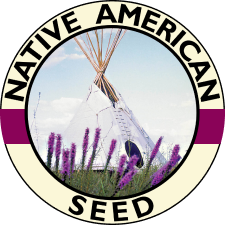The Common Sunflower is one of those natives that we all take for granted. We see them here, there and everywhere, but almost always at a distance. We have forgotten how attractive those big yellow blooms are, when seen up close. Sunflowers are a "nostalgic" flower that make us think of farms and country gardens of the past. They turn up on everything from clothing to pot holders in the kitchen. They've never been out of fashion to the wild things, either.
Common Sunflowers are a terrific habitat plant! They attract a variety of bees and butterflies, and are a larval food of choice for the Gorgone Crescentspot, Painted Lady, Silvery Crescentspot, and Bordered Patch butterflies. Common Sunflowers are also a major food source for seed-eating birds in the fall. To top it all off, they are hardy enough to withstand drought conditions, and if you allow them to re-seed, they will be there to feed wildlife and provide beauty every year.
The Natives are Friendly
The common sunflower, Helianthus annuus, is as much a part of our heritage as the buffalo, Native Americans, and the Prairies on which they depend. Lewis and Clark mentioned the Indians' use of Common sunflower in their journals. This evidence suggests that nearly 3,000 years ago Native Americans began domesticating the Common Sunflower by hand selecting the largest seeds for replanting the next year. This eventually yielded a product with larger seeds, that the Indians used for food, oil, crafts and medicine and that thankfully we enjoy today as well. Native Americans would pound and boil the flower for dyes which they used in weaving and basketry. Some medicinal usages for common sunflower are for: snakebites, spider bites, pulmonary ailments, burns, malaria, high fevers, diuretics and expectorants. Not only are the seeds edible but also the sprouts and the yellow petals make a tasty addition to salads. Wild cousins of this early domesticated stock are still found along roadsides and in fields throughout North America. It is the most abundant wildflower in Texas probably because they thrive in full sun and require very little water. The bloom of this species faces east as the morning sun rises and follows the sun through the sky until sunset with its face turned towards the west. The name Common Sunflower in Spanish means looks at the sun. In Greek the scientific name Helianthus comes from “helios” which means sun, and “anthos” meaning flower - thus the name sunflower.
The common sunflower is an annual that begins blooming the end of May continuing through the fall. It is an allelopathic species that produces a chemical that reduces competition from other plants. Common sunflowers can grow from 2ft to 8ft tall with numerous branches that have flowers ranging from 2 to 5 inches across. The seeds are eagerly eaten by doves, quail, turkey, and various song birds. It is a favored seed of the American Goldfinch. Pollinators rely on common sunflower as a dependable nectar source during the hottest part of the summer. Winter and early spring is the perfect time to plant seeds so that you can experience the uplifting site of the bright blooms during hot summer months. I know the birds enjoy their fall bounty of delicious seeds.










